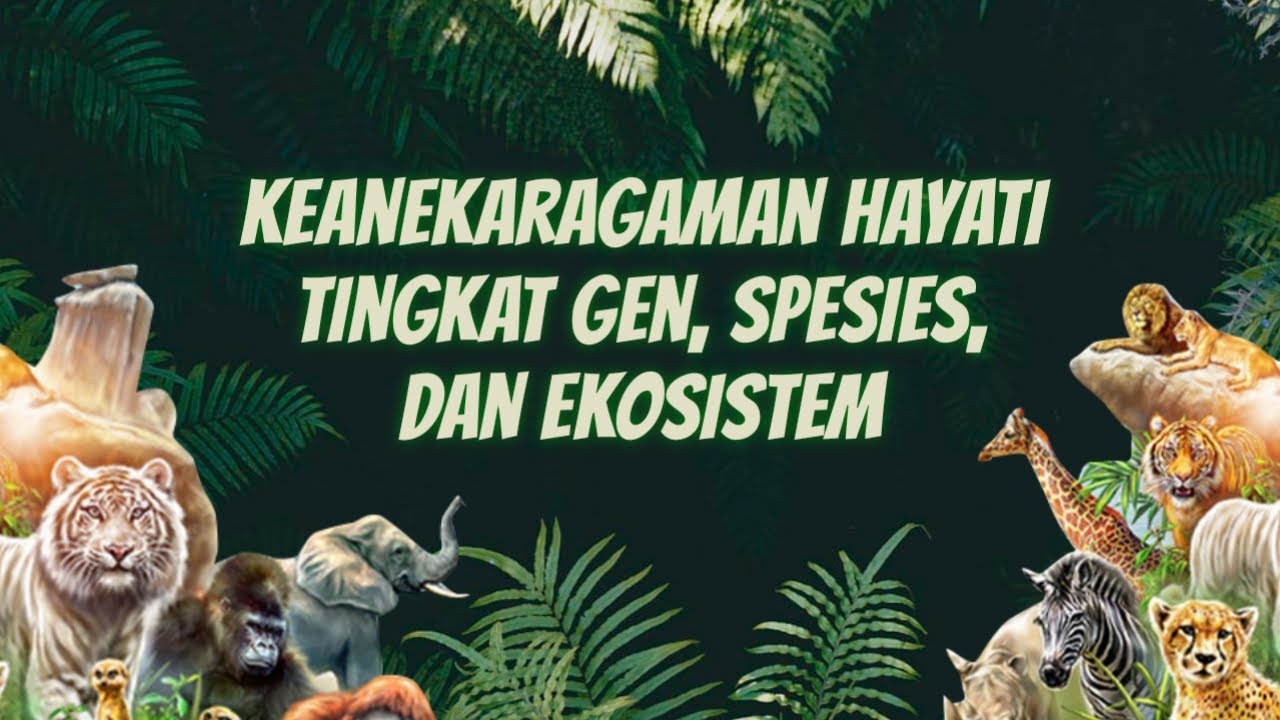Dr Praveen - Types of Biodiversity
Summary
TLDRThis session covers the three types of biodiversity: species diversity, genetic diversity, and ecological diversity. Species diversity refers to the variety of species in a region, while genetic diversity deals with variations within a species' genetic makeup. Ecological diversity is the range of ecosystems in a given area. The session also explains biodiversity hotspots, which are regions with a high concentration of endemic species, and the criteria for being classified as one. Finally, it discusses threatened species and their categories as defined by the IUCN, from extinct to least concerned.
Takeaways
- 🌱 Species diversity refers to the variety of different species in a particular area, including all life forms from plants to microorganisms.
- 🧬 Genetic diversity highlights variations in genetic makeup within individuals of the same species, explaining why no two individuals are identical.
- 🌍 Ecological diversity involves the variety of ecosystems in a region, encompassing deserts, rainforests, mangroves, etc., and their interactions.
- 🌎 Biodiversity hotspots are areas with high levels of diverse species, including many that are unique and at risk of extinction.
- 🌿 To qualify as a biodiversity hotspot, a region must have at least 1,500 endemic plant species and have lost over 70% of its original vegetation.
- 🇮🇳 India has four biodiversity hotspots: the Himalayas, Indo-Burma, Sundaland, and the Western Ghats.
- 🐦 These biodiversity hotspots, despite covering only 2% of Earth's land, are home to over half of the world's plant species and 43% of unique vertebrates.
- 🚨 Threatened species are those at risk of extinction and are classified by the IUCN into categories like Critically Endangered, Endangered, and Vulnerable.
- 📕 The IUCN Red Data Book records species facing extinction, and the seven categories range from Extinct to Least Concern.
- 💡 Conservation efforts are critical in biodiversity hotspots to protect both endemic species and ecosystems under threat.
Q & A
What are the three types of biodiversity discussed in the video?
-The three types of biodiversity are species diversity, genetic diversity, and ecological diversity.
What is species diversity?
-Species diversity refers to the variety of different types of species found in a particular area, ranging from plants to microorganisms.
How does genetic diversity differ from species diversity?
-Genetic diversity refers to variations among the genetic resources of organisms within the same species, whereas species diversity involves the variety of different species.
Can you provide an example of genetic diversity?
-An example of genetic diversity is the variation among humans, where no two individuals are exactly alike in their genetic makeup.
What is ecological diversity?
-Ecological diversity refers to the variations in ecosystems, such as deserts, rainforests, and mangroves, and the interactions among species in those ecosystems.
What is a biodiversity hotspot?
-A biodiversity hotspot is a geographical area with a high abundance of diverse and endemic species, many of which are at risk of extinction.
What are the two criteria for an area to be considered a biodiversity hotspot?
-The area must have at least 1,500 endemic vascular plant species and have lost at least 70% of its original natural vegetation.
How many biodiversity hotspots are there in the world?
-There are 36 biodiversity hotspots in the world.
Which biodiversity hotspots are found in India?
-India has four biodiversity hotspots: the Himalayan, Indo-Burma, Sundaland, and Western Ghats-Sri Lanka hotspots.
What are the seven categories of threatened species according to the IUCN?
-The seven categories are extinct, extinct in the wild, critically endangered, endangered, vulnerable, near-threatened, and least concern.
Outlines

Esta sección está disponible solo para usuarios con suscripción. Por favor, mejora tu plan para acceder a esta parte.
Mejorar ahoraMindmap

Esta sección está disponible solo para usuarios con suscripción. Por favor, mejora tu plan para acceder a esta parte.
Mejorar ahoraKeywords

Esta sección está disponible solo para usuarios con suscripción. Por favor, mejora tu plan para acceder a esta parte.
Mejorar ahoraHighlights

Esta sección está disponible solo para usuarios con suscripción. Por favor, mejora tu plan para acceder a esta parte.
Mejorar ahoraTranscripts

Esta sección está disponible solo para usuarios con suscripción. Por favor, mejora tu plan para acceder a esta parte.
Mejorar ahoraVer Más Videos Relacionados

Keanekaragaman Hayati | Belajar online mapel biologi

KEANEKARAGAMAN MAHLUK HIDUP DAN KLASIFIKASI : BIOLOGI KELAS 10 SMA

Keanekaragaman Hayati Tingkat Gen, Spesies, dan Ekosistem | Dunia Biologi

Science, Technology and Society: Biodiversity and Healthy Society

UAS PLH KEANEKARAGAMAN HAYATI - ARSYA DWI GUSTAMI - 210210201082

Tingkat Keanekaragaman Hayati | Biologi Kelas X
5.0 / 5 (0 votes)
